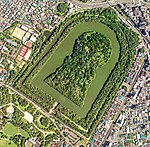.mw-parser-output .hidden-begin{box-sizing:border-box;width:100%;padding:5px;border:none;font-size:95%}.mw-parser-output .hidden-title{font-weight:bold;line-height:1.6;text-align:left}.mw-parser-output .hidden-content{text-align:left}You can help expand this article with text translated from the corresponding article in Japanese. Click [show] for important translation instructions.
Machine translation, like DeepL or Google Translate, is a useful starting point for translations, but translators must revise errors as necessary and confirm that the translation is accurate, rather than simply copy-pasting machine-translated text into the English Wikipedia.
Consider adding a topic to this template: there are already 3,775 articles in the main category, and specifying|topic= will aid in categorization.
Do not translate text that appears unreliable or low-quality. If possible, verify the text with references provided in the foreign-language article.
You must provide copyright attribution in the edit summary accompanying your translation by providing an interlanguage link to the source of your translation. A model attribution edit summary is Content in this edit is translated from the existing Japanese Wikipedia article at [[:ja:牽牛子塚古墳]]; see its history for attribution.
You should also add the template ((Translated|ja|牽牛子塚古墳)) to the talk page.
For more guidance, see Wikipedia:Translation.

Kengoshizuka Kofun is a Kofun in Asuka, Nara Japan.[1][2] Specifically, it is an Octagonal Kofun. It is said to be the burial site of Empress Kōgyoku.[3][4] it was reconstructed and opened to the public on May 6 2022.[4] This contrasts with other Imperial tombs such as the Mausoleum of Emperor Tenji which are closed to the public by the Imperial Household Agency.[5]

